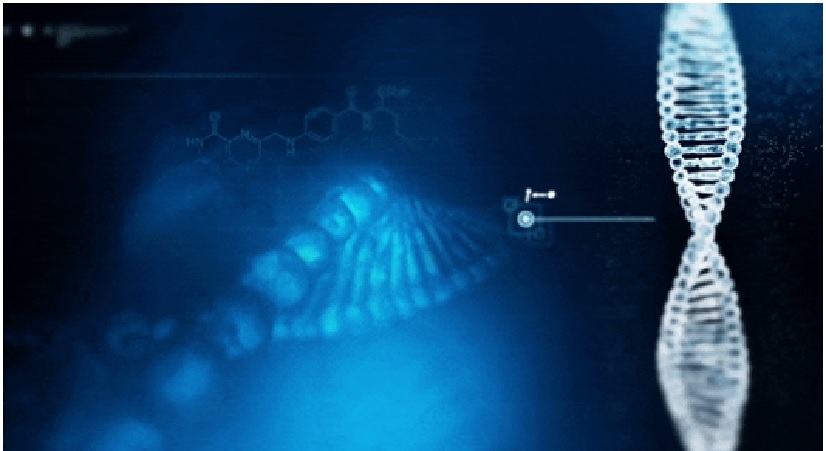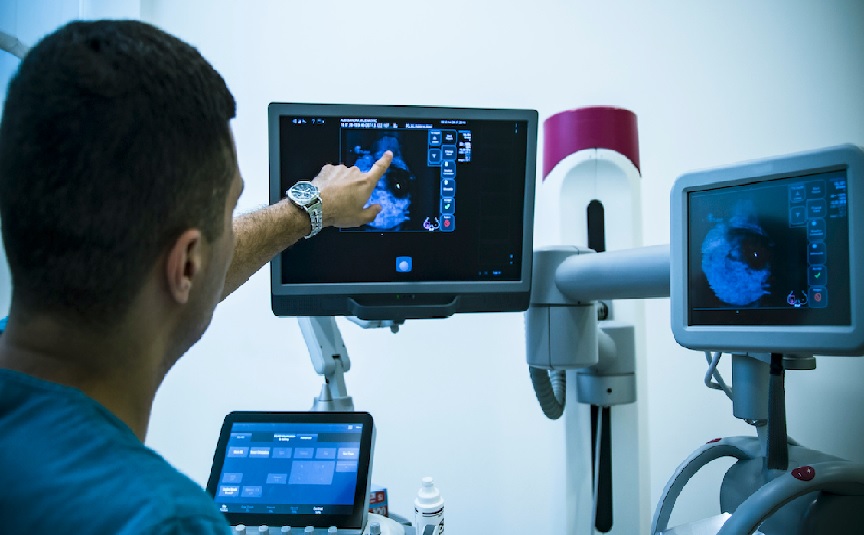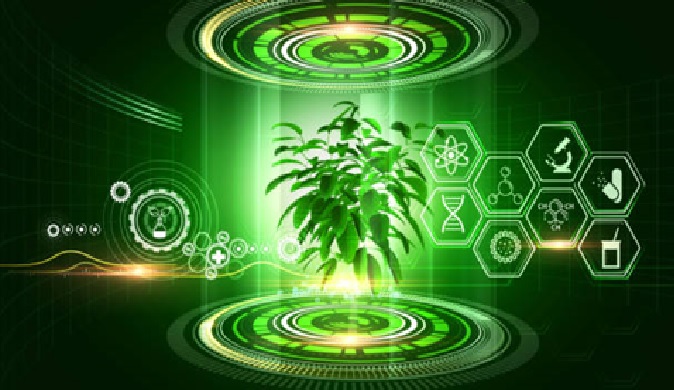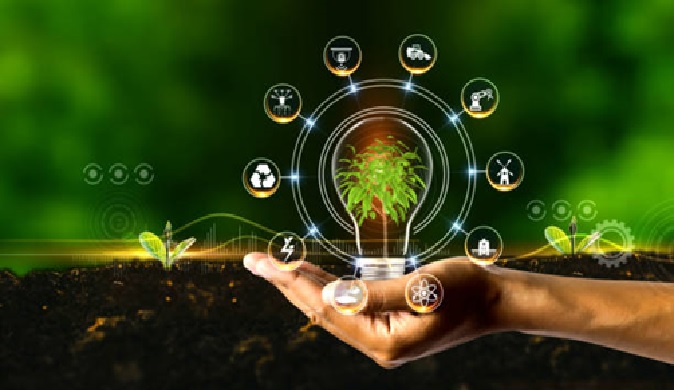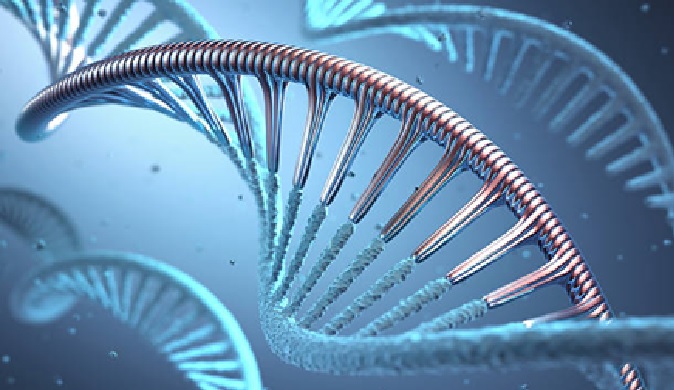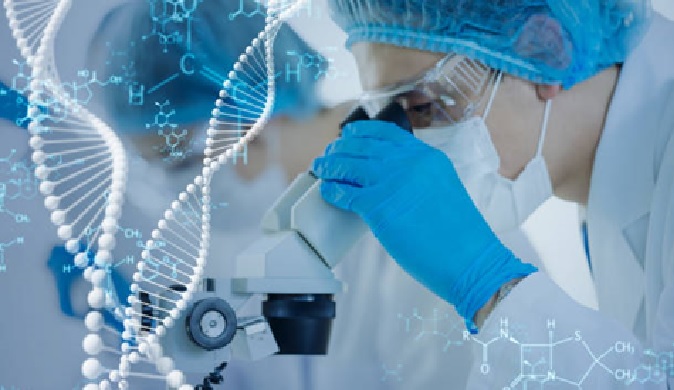Gene Sequencing
The costs of DNA sequencing have fallen by 5 orders of magnitude since the early 2000s, opening up a wide range of applications in the industry. The reduced cost of sequencing whole genomes allows the identification of pediatric disorders, personalized treatments, and setting up large cohorts with extensive phenotyping. Sequencing also presents a rapid and inexpensive method to detect the presence of microbes, ranging from the detection of pathogens in clinical and dairy samples to beneficial soil microbes. Biotechnology startups are innovating with new sequencing technologies, as well as novel applications for gene sequencing.[1]
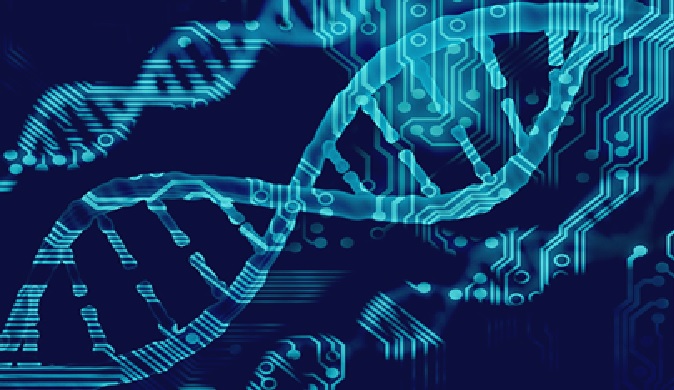
Figure 1. Gene Sequencing
Gene Sequencing is shown in figure 1. DNA sequencing refers to the general laboratory technique for determining the exact sequence of nucleotides, or bases, in a DNA molecule. The sequence of the bases (often referred to by the first letters of their chemical names: A, T, C, and G) encodes the biological information that cells use to develop and operate.[2]
Importance of DNA sequencing in biotechnology
- In Agricultural Biotechnology
- In Animal Biotechnology
- In Animal Biotechnology
- In Forensic Biotechnology
- In Pharmaceutical Biotechnology
- In Microbial Biotechnology
- In COVID19 Pandemic [3]
History of Sequencing:
The work carried out by a British biochemist named Frederick Sanger, laid the foundation for sequencing proteins. In 1955, Sanger had completed the sequence of all the amino acids in insulin. His work provided evidence that proteins consisted of chemical entities with a specific pattern, rather than a mixture of substances.
Later, a method named as Sanger Sequencing was developed by Frederick Sanger and his colleagues in 1977, where DNA could be sequenced by generating fragments. It was the most widely used sequencing method for approximately 40 years.[4]
Applications of DNA Sequencing Technologies:
DNA sequencing reveals the genetic information that is carried in a particular DNA segment, a whole genome or a complex microbiome. Scientists can use sequence information to determine which genes and regulatory instructions are contained in the DNA molecule. The DNA sequence can be screened for characteristic features of genes, such as open reading frames (ORFs) and CpG islands. Homologous DNA sequences from different organisms can be compared for evolutionary analysis between species or populations. Notably, DNA sequencing can reveal changes in a gene that may cause a disease.[5]
Knowledge of the sequence of a DNA segment has many uses. The arrangement of nucleotides in DNA determined the sequence of amino acids in proteins, which in turn helped determine the function of a protein. It helps in basic biological research, in numerous applied fields such as medical diagnosis, biotechnology, forensic biology, virology, and biological systematics. Comparing healthy and mutated DNA sequences can diagnose different diseases including various cancers, characterize antibody repertoire, and can be used to guide patient treatment.[6]
References:
- https://www.startus-insights.com/innovators-guide/top-10-biotech-industry-trends-innovations-in-2021/
- https://www.genome.gov/genetics-glossary/DNA-Sequencing
- https://blalbiotech.com/blog/importance-of-dna-sequencing-in-biotechnology
- https://towardsdatascience.com/dna-sequence-data-analysis-starting-off-in-bioinformatics
- https://www.cd-genomics.com/blog/dna-sequencing-definition-methods-and-applications/
- https://blalbiotech.com/blog/importance-of-dna-sequencing-in-biotechnology
Cite this article:
Gokula Nandhini K (2023), Gene Sequencing, AnaTechMaz, pp.115




